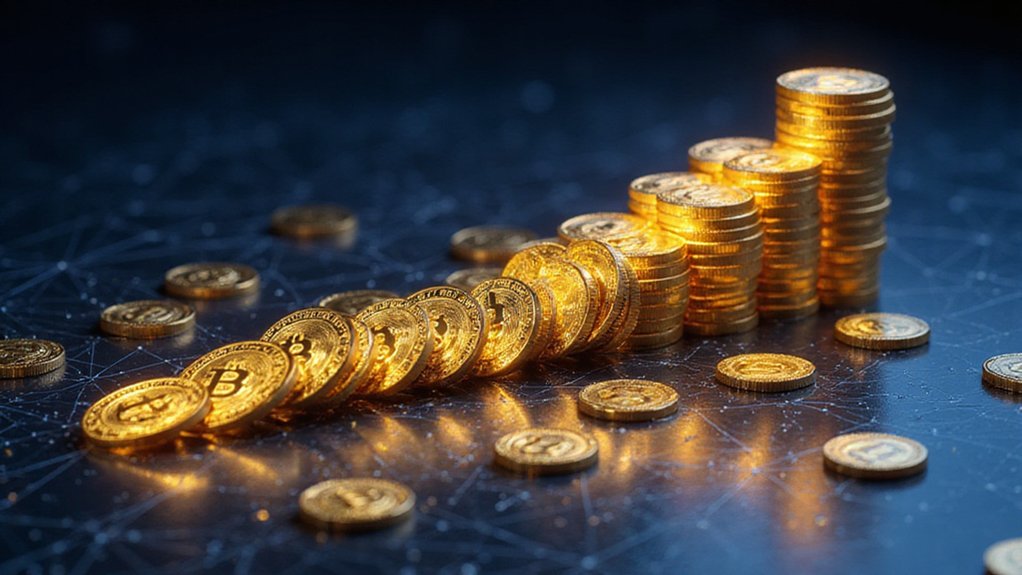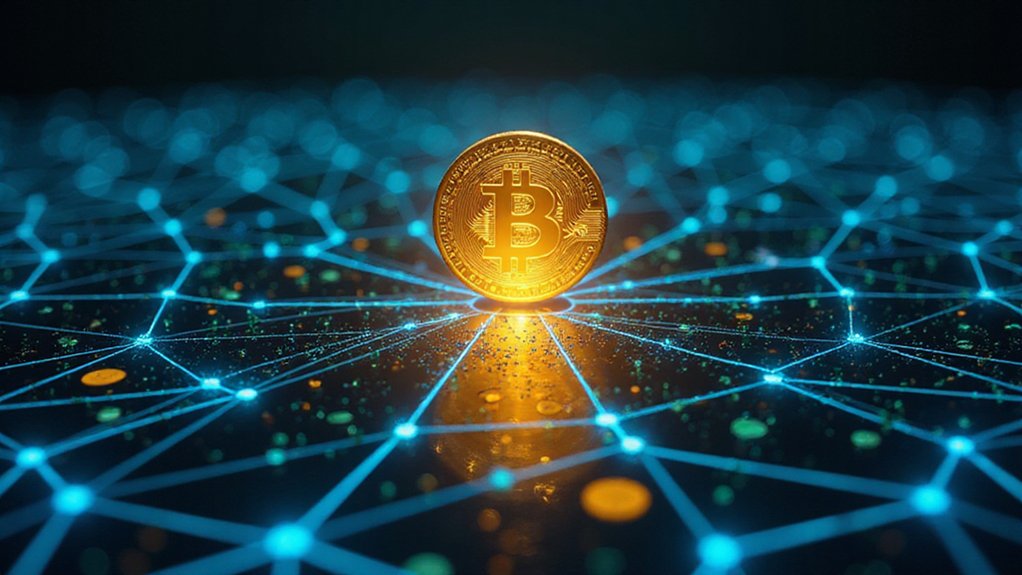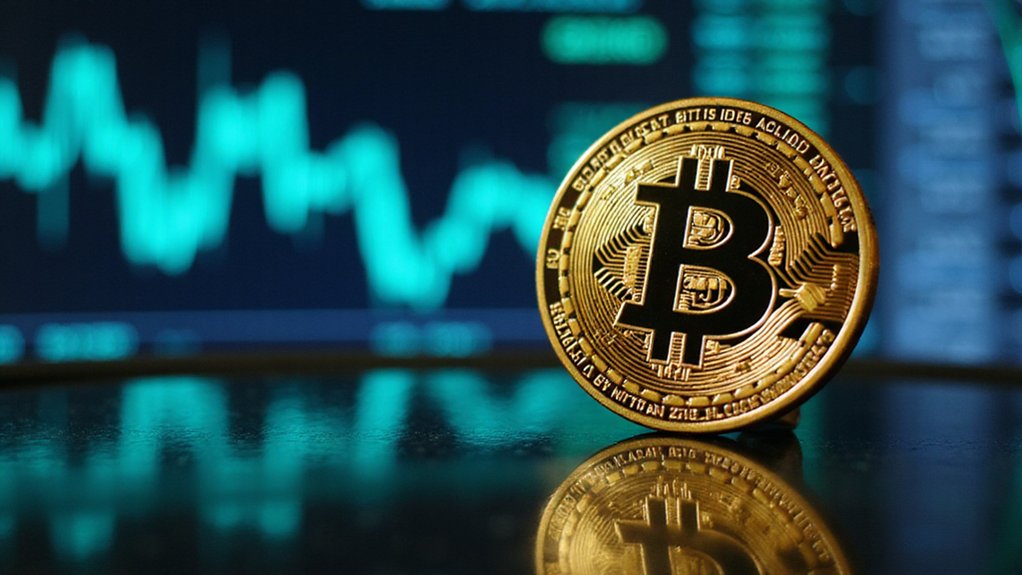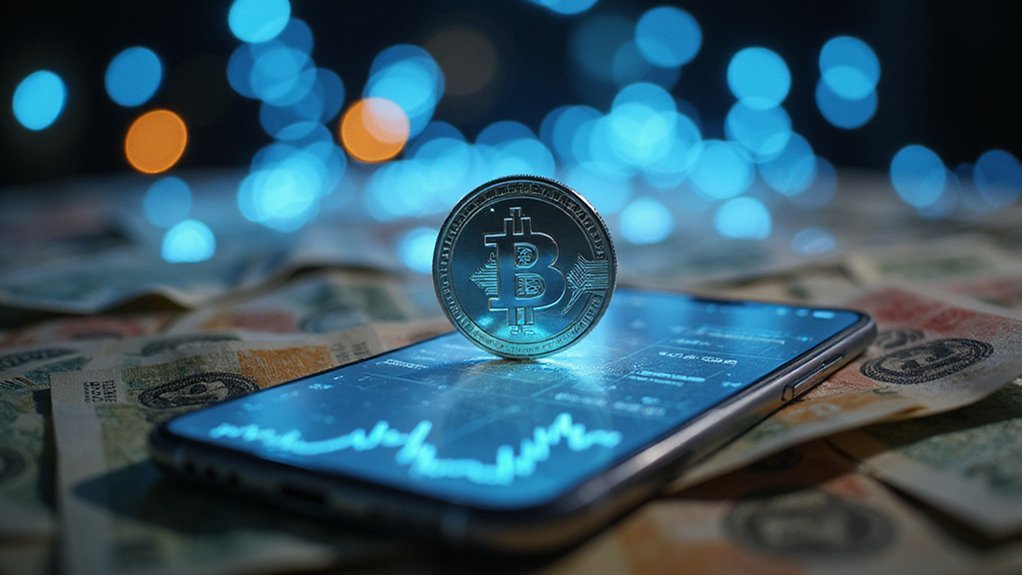Currently, approximately 19.85 million bitcoins exist in circulation—representing over 93% of Bitcoin’s immutable 21 million supply cap. This mathematically-enforced ceiling (quite unlike fiat’s infinite printing potential) continues to fill at a deliberately decreasing rate through mining rewards, which halve every four years. The remaining 1.15 million coins will trickle into existence until 2140, with each new satoshi further reinforcing Bitcoin’s foundational scarcity proposition. The implications of this fixed supply extend far beyond mere numbers.
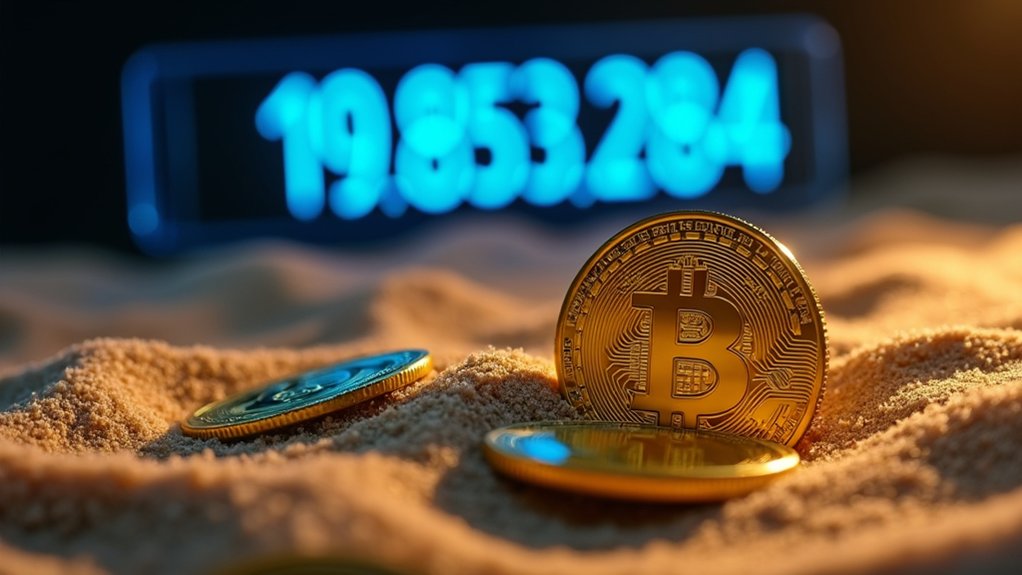
Just how scarce is the world’s most famous cryptocurrency?
Bitcoin, unlike the infinitely printable fiat currencies governed by central banks, operates under a protocol-defined supply cap of precisely 21 million coins—a mathematical ceiling no individual or organization can alter.
This immutable scarcity forms the bedrock of Bitcoin‘s economic proposition and distinguishes it fundamentally from traditional monetary systems.
Currently, approximately 19.85 million bitcoins circulate in the global economy, representing over 93% of the maximum possible supply. This represents exactly 19,853,284 BTC in circulation according to current market data.
Bitcoin’s circulating supply approaches its absolute limit—with each passing day, a mathematically scarce asset becomes scarcer still.
This figure—which increases daily but at an ever-decreasing rate—reflects Bitcoin’s ingenious design: new coins enter circulation exclusively through mining rewards that systematically diminish through “halving events” occurring roughly every four years.
What began as a generous 50 BTC reward per block has progressively decreased, extending the timeline toward total supply fulfillment.
The growth rate of Bitcoin’s circulating supply has maintained a consistent 0.85% annual increase as recorded in recent comparative data.
The remaining 1 million bitcoins will emerge at an increasingly glacial pace.
Though miners continue their computational labors, the final bitcoin isn’t projected to materialize until around 2140—a remarkably patient distribution schedule that spans more than a century.
This methodical supply release schedule (which some economists might characterize as brilliantly deflationary or dangerously restrictive, depending on their monetary philosophy) guarantees Bitcoin’s scarcity appreciates with time rather than diminishes.
Bitcoin’s store of value function is enhanced by its scarcity, making it resilient against inflation in ways traditional currencies cannot match.
Bitcoin’s supply mechanics become further complicated when considering permanently lost coins—those sent to addresses with irretrievable private keys.
While the protocol maintains its theoretical 21 million cap, the functional supply remains considerably lower due to these digital casualties.
Such losses, paradoxically, only enhance Bitcoin’s scarcity proposition.
The elegance of Bitcoin’s fixed supply model—whether viewed as revolutionary monetary innovation or mathematical curiosity—creates inherent resistance to the inflationary pressures that typically erode purchasing power in traditional currencies.
As the mining rewards continue their programmed decline, this cryptocurrency’s defining characteristic remains unchanged: there will never be more than 21 million bitcoins, regardless of demand, utility, or market valuation.
Frequently Asked Questions
Who Owns the Most Bitcoin Today?
Satoshi Nakamoto, Bitcoin’s enigmatic creator, remains the undisputed heavyweight champion of crypto holdings, commanding an estimated 968,452 to 1.1 million BTC—a fortune amassed through early mining activities.
While corporate entities like Binance (647,106 BTC) and MicroStrategy (244,800 BTC) have established formidable positions, they pale in comparison to Nakamoto’s dormant treasure trove.
Even the U.S. government, with its 205,515 BTC seized from various illicit operations, cannot approach the founder’s monumental stake.
How Do Bitcoin Halvings Affect the Mining Reward?
Bitcoin halvings systematically reduce the mining reward by 50% approximately every four years.
This programmed scarcity mechanism—a cornerstone of Bitcoin’s monetary policy—has seen rewards drop from the original 50 BTC to the current 3.125 BTC per block (as of April 2024).
While halvings initially compress miners’ profit margins and occasionally force inefficient operations offline, they historically precede significant price appreciation, ultimately reinforcing the network’s security through a brutal but effective economic natural selection process.
Can Lost Bitcoins Ever Be Recovered?
Lost bitcoins can only be recovered in limited circumstances.
When private keys or seed phrases are forgotten, specialized recovery services may help—though success depends entirely on having partial information to work with.
For bitcoins sent to incorrect addresses or lost through hardware failures without backups, recovery is virtually impossible due to blockchain immutability.
This permanence (a feature, not a bug in Bitcoin’s design) means an estimated 3.8 million bitcoins are likely gone forever, inadvertently tightening the asset’s scarcity.
What Happens to Bitcoin After All 21 Million Are Mined?
After all 21 million bitcoins are mined (around 2140), the Bitcoin ecosystem will undergo a fundamental shift.
Miners will shift from block rewards to transaction fees as their sole compensation—a shift that could reshape network security dynamics.
The inherent scarcity will be fully realized, potentially enhancing Bitcoin’s store-of-value proposition.
Whether this economic model proves sustainable remains one of crypto’s great unanswered questions, as the network must maintain sufficient security incentives without the inflationary subsidy that currently underwrites its operation.
How Does Bitcoin’s Limited Supply Impact Its Value Long-Term?
Bitcoin’s limited supply creates a deflationary dynamic that—unlike the perpetual money-printing circus of fiat currencies—establishes scarcity as a fundamental value driver.
This fixed cap of 21 million coins (with approximately 20 million already circulating) theoretically supports long-term appreciation as demand encounters an increasingly inelastic supply.
While skeptics might question whether digital scarcity translates to intrinsic worth, the market has repeatedly demonstrated that this mathematical certainty provides a compelling counternarrative to traditional inflation-prone assets.
